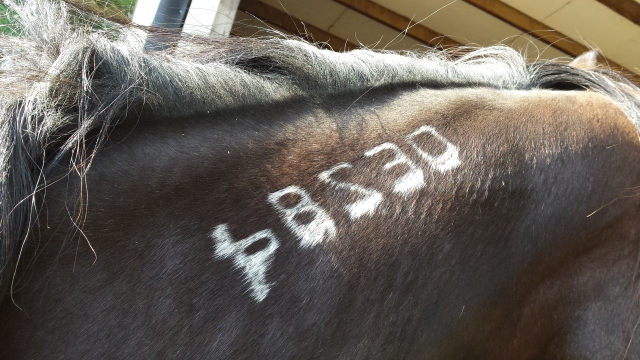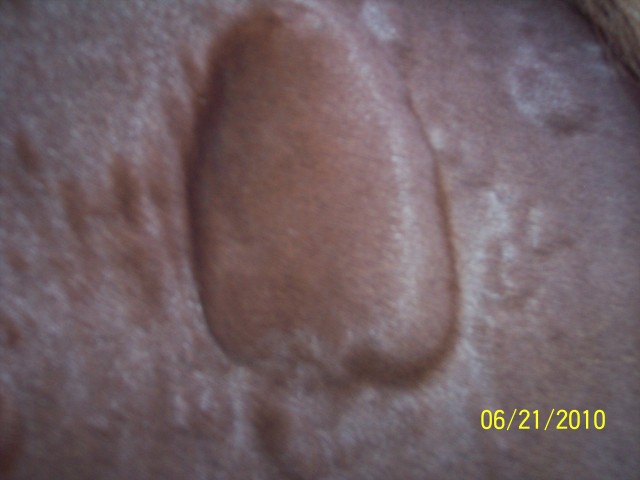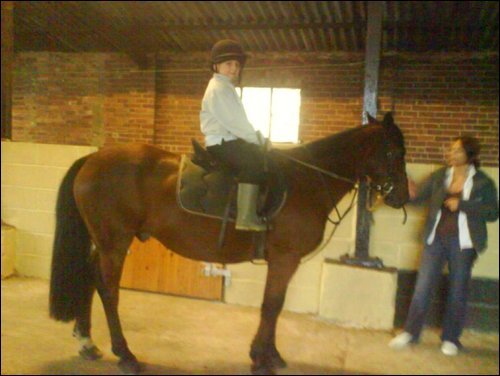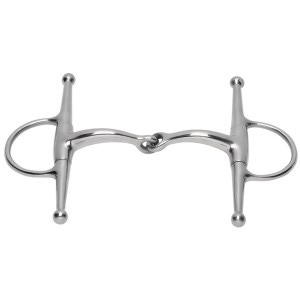QuestionHi Sarah,
I ride a 16 year old quarter horse gelding. I compete in jumping, hunters, and equitation on him. He has some anxiety issues (especially at the canter), and so I encourage him to relax. However, although I can get him to extend and collect great, I can't get a good headset on him. My trainer likes to use a "neck stretcher", which is kind of like a bungee cord, but I don't think my horse likes it. I also don't like how it "breaks" his neck at the pole. I have never see-sawed the reins to get his head down. Is there an alternative method that doesn't involve so many artificial aids?
AnswerHi Meg,
So glad you asked! There are a few things I can suggest, starting from before you even tack up.
1. Consider either a massage therapist, acupressure, or chiropractic treatment, or try combining the three. This will help supplement the other approaches.
2. Consider adding Glucosamine to his supplements, or something similar. This will help his joints along his spine and neck to improve.
3. Evaluate his environment. If he currently east his hay from a rack consider placing the hay on the ground. Take note of his feed and water buckets and consider maybe lowering those just a little bit.
4. As your grooming him, use your thumbs and rub in a small circular motion with firm pressure along his spine from his dock to his poll and repeat on the other side. Make this part of your daily grooming routine.
5. Once you are tacked up, before you mount, do some stretches with him. Begin by carefully lifting and extending his front legs(obviously one at a time) forward, just as he would be asked by your farrier to be shod. Then stretch his neck. You will need to initially teach him how to reach for a carrot near his chest or between his legs, as this is the first neck stretch you want to simulate before each ride. Then stretch his neck left then right by slowly guiding his nose to his shoulder. Don't force any of these stretches, just allow him to relax into them at his own pace. Lastly, use your forearm in a sweeping motion with firm pressure and run the length of the front of his shoulders.
6. When you mount, do not sit immediately. Try for a few weeks to just hold a half seat or two point for the first 3-5 minutes and allow him to walk free of your seat.
7. Before you begin trotting or any type of framing, make circles. Start with a 20 meter circle and on each lap gradually decrease your circle until you no longer can. Then reverse directions and repeat. Next while walking use both hands and with your knuckle rub somewhat slowly in circular motion on either side of his withers. Gradually make the circles bigger until they are about the size of your fist.
8. Once you have properly warmed up and you begin your extensions and collections keep in mind your center, weight, and hands. It is easy for riders to get heavy on their horse when going through the motions of your daily ride. At the beginning of your ride consider using a half seat for your transitions as well maintaining gradual downward transitions. During the second half of your work, as you lower and sink your seat, you may find adjusting your hands a inch forward and 1/2-1 inch higher in combination with a slightly closed hip angle will encourage his head to come into frame.
All of this is a collective natural approach to improving your horse's strength, balance, and flexibility. Without these three things in place a proper frame will not be achieved. Give him a few sessions to see marked improvement. Including this in your routine will help your aging horse continue to perform in the years to come.

 neck tattoo
Question1st mare
QUESTION: Have 2 mare that I ha
neck tattoo
Question1st mare
QUESTION: Have 2 mare that I ha
 Bumps all over my horse
Question
under mane
I just went down to pasture to chec
Bumps all over my horse
Question
under mane
I just went down to pasture to chec
 behaviour
QuestionMy boy!
QUESTION: Hi Lyn, hope you can h
behaviour
QuestionMy boy!
QUESTION: Hi Lyn, hope you can h
 lunge lines made out of cotton
Question
lunge line cotton lead rope
Hi L
lunge lines made out of cotton
Question
lunge line cotton lead rope
Hi L
 curved mouthpiece bits on racehorses
Question
curved mouthpiece
hello Lynne. I work i
curved mouthpiece bits on racehorses
Question
curved mouthpiece
hello Lynne. I work i